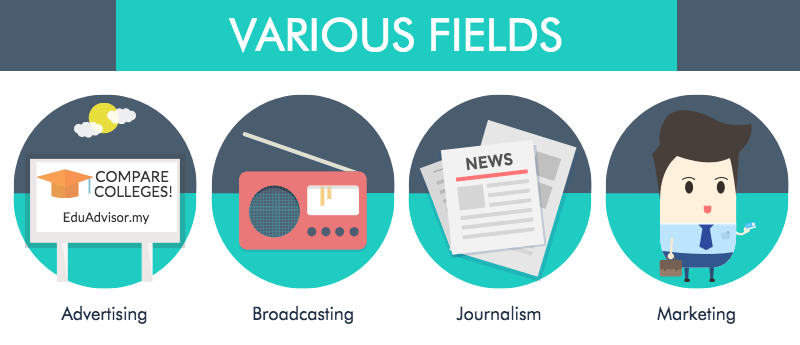Reflection of Survey of Communication Studies Course
- aidanbrotherton6
- Dec 14, 2020
- 5 min read
Updated: Dec 14, 2020
"Communications" (Rendezvouscommunications.com)
Over the course of Survey of Communication Studies, I have learned a lot. When I first came into the class I had chosen communications as my major almost as a default, I had no idea what someone could really do with a communications degree, nor the practical uses of the field in the real world. Through this course, however, I was able to learn more than I could have thought. From the practical fields in which I can go into with this major to the practical uses of communication studies in the real world and much more, this class has made me appreciate and not be as hesitant about picking communications as my major.
"What is Communications?" (Practicalmanagementskills.com)
One of the first lessons was about what communication is and how we communicate as humans. I learned through this lesson that communication is much more complex than one would think. First, Communication requires a speaker that encodes a message and uses some form of channel or medium to send it to a receiver who then interprets the message. Communication is not just about the exchange of messages however, words and symbols are also used, and then cultural and contextual assumptions are made. Communication is the process of using these arbitrary symbols to create and share meaning and assumptions. An example of one of these symbols is the dollar bill. In reality, it is simply a piece of green paper. Society has given it a certain meaning and value and that meaning is shared by everyone. Different cultures communicate differently whether it's through different languages or different symbols like the dollar or even gestures such as waving or nodding your head. It is important to be culturally relative and to not think of yours as the “correct culture”. All cultures are unique and should be respected equally.
"Various fields of mass communications" (Eduadvisor.com)
In this same lesson I also learned that there are quite a few interesting fields that Communication students can go into. One of the most interesting is applied communication. This is how communication theory and research can be relevant in addressing practical problems. One example of this is how to communicate emergency storm warnings to the areas affected in the most efficient and quickest way. Another interesting area of communication study is legal communication. This field is about how communication organizes and creates meaning in a courtroom. An example of this is looking at how a lawyer can most effectively defend their client by convincing the jury of a certain thing. Areas of communication such as these are very important because of the level of effect they have in the real world. Another field of communication is Mediation and Dispute Resolution. This area is about how conflict is understood, managed, and resolved. This field of communications is broad and can be applied to many things. One example of this is mediating a dispute during a union strike. This can be very complicated and needs good communication in order to resolve the problem before anything bad happens. Learning about how broad the field of communications is has allowed me to become confident in having it as my major. Pretty much all jobs incorporate at least some form of it and those who are skilled in it immediately have an advantage over those who aren’t.
"The 5 'Cs' Approach to Conflict Resolution in the Workplace" (Entrepenueur.com)
Another interesting thing that this class taught me is how much communication and business have in common. This is particularly interesting to me because I am thinking about also pursuing a business degree. One of the most important lessons was how much conflict and the inability to efficiently communicate in the workplace actually costs a business. According to Workplace Wisdom. How to Resolve Interpersonal Conflicts in the Workplace: by Liz Kislik, “One large, seminal study estimated that U.S. businesses spend $359 billion annually on a combination of time waste, absenteeism, avoidance, and general disengagement caused by workplace conflict.” (page 3) This number is an insane amount to be spending on conflict-related issues and illustrates just how important it is for companies to find ways to efficiently handle any problems that might come up. In this lesson, we also looked at several times where companies did end up losing money. The most interesting case to me was the conflict between Starbucks and Kraft’s coffee. In this conflict, there was a dispute for three years over how Starbucks coffee was distributed in grocery stores. As Starbucks emerged as the leading coffee company in the world they tried to end their agreement with Kraft but they were denied. Nevertheless, they ended up selling K-Cup packs. They were later sued for $2.75 billion. This conflict resulted from how profitable Starbucks became and how they essentially outgrew working with Kraft. I then thought about how better communication could have solved this. Making a mandatory date for the renegotiating of the terms of their contract such as the fee would have prevented this big of a conflict and might have even been able to solve it altogether eliminating the need for the separation of companies. Saving billions of dollars is therefore just one way that businesses can profit with the incorporation of better communication.
"Steve Jobs" (Macrumor.com)
Perhaps my favorite lesson throughout the course was about rhetoric and organizational communication and looking at several of the most successful entrepreneurs and seeing that their success has resulted from these good communication strategies. One of the people I looked at was Steve Jobs. He was the creator of Apple and led it to be the most valuable brand in 2019 worth $206 billion. The article "Communication Through Presentation. How Did The Tech Leader SteveJobs Communicate and Excel With These 3 Simple Tricks" by techleaderscommunication.blogspot.com, discusses several of his communication strategies. One of the communication strategies that he implemented was focusing on the essential information that he wanted the audience to remember: the product and its usefulness. This is practicing logos and made his message clear, and concise. Another thing he did was repeat key information. This led the audience to have a better understanding of the product and why it was so useful. This also led this information to stick in the audience's head making them more likely to remember and buy the product. A third communication practice that he used was that he prepared what he was going to say to the point that he would be able to recite it perfectly even if he were to be woken up in the middle of the night. This helped with his confidence and built credibility of being reliable. All these things can be seen in his many speeches such as the one below. These communication practices helped shape his perception in the media of being intelligent, and of being a great businessman. By preaching these things to his workers, they were also more effectively equipped to communicate and make the company a success. Learning about how successful someone can become by incorporating good communication strategies was very eye-opening and stressed how important it can really be to have.
"Steve Jobs Introducing The iPhone At MacWorld 2007" (Youtube.com)
This class has clearly taught me many different things that are beneficial in learning such as the different ways we communicate, the different types of jobs that surround communication, how important good communication is for business and how much money it can save, and several communication strategies. By knowing and implementing all this information, one is able to better succeed in any field that they go into. Because of this course, I am now confident I made the right choice of going into communications.







Comments